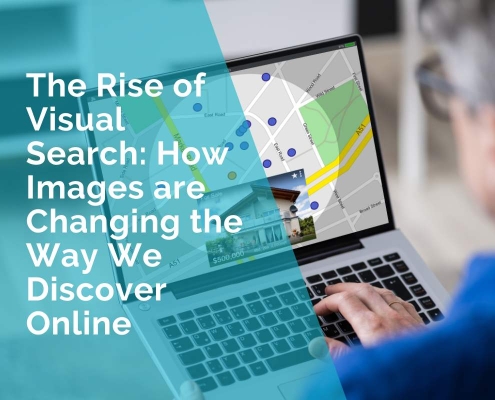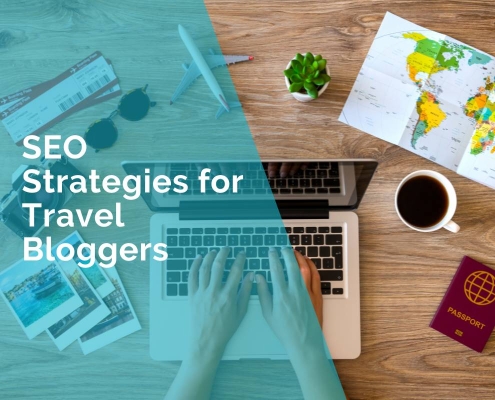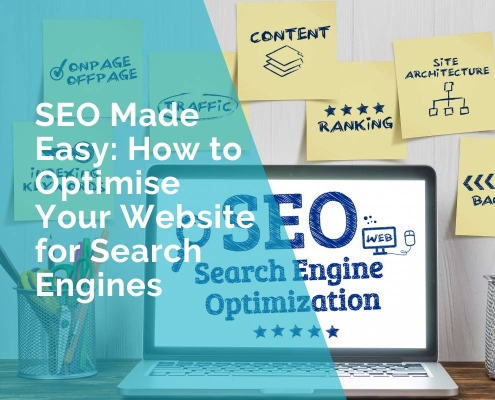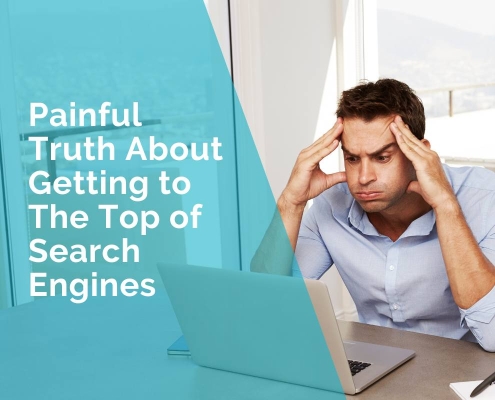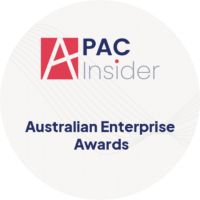Is SEO Enough? When Small Businesses Should Add Google Ads to the Mix
SEO delivers long-term value. It helps businesses earn trust, rank for relevant searches, and generate steady traffic over time. That makes it a smart investment, especially for small businesses working with limited resources.
But organic growth can be slow. You might wait months to see results. Competitors with stronger websites and bigger content budgets can hold their rankings for years. Even if your SEO is solid, traffic may dip during algorithm updates or shifts in buyer behaviour. When that happens, relying on organic alone can leave you exposed.
Google Ads fills the gap. It gets your business in front of high-intent buyers quickly. You control your daily budget, write your message, and choose exactly who sees your offer. Paid search doesn’t replace SEO. It gives it backup. If you’re in a crowded niche or need leads now, combining both strategies lets you stay visible, stay flexible, and keep revenue flowing while SEO builds in the background.
When SEO Alone Falls Short
Organic search has its strengths, but it doesn’t solve every growth challenge. Some businesses rely heavily on SEO and find themselves stalled, even with strong content. Others see decent rankings but weak conversions. These are the moments when SEO alone cannot carry the burden.
1. When You Need Leads Immediately
SEO takes time to deliver. In competitive industries, results may not appear for several months. If you need leads this week due to seasonality or early-stage urgency, waiting becomes a risk. Paid search allows you to generate visibility and clicks right away.
2. When Competitors Dominate the Results Page
High-ranking spots often belong to long-established brands. These businesses have larger budgets, more content, and deeper authority. If your website shows up below those listings, visibility suffers. Google Ads lets you bypass that hierarchy and appear at the top of results immediately.
3. When Your Traffic Isn’t Converting
Attracting visitors does not always lead to revenue. Your site may draw informational traffic that never takes action. Paid search gives you more control over who sees your offer and when. That means you can prioritise buyers with high intent, not browsers who are only researching.
4. When Google Algorithm Updates Hit Hard
A single update can undo months of progress. Rankings may drop even if your site follows best practices. Sudden traffic losses affect revenue quickly. Google Ads helps keep your pipeline stable when organic performance becomes uncertain or volatile.
5. When You’re Launching a New Product or Location
New products or services need fast exposure. SEO cannot rank fresh pages quickly enough to meet launch goals. Google Ads gives you a way to reach people searching for what you offer, while your organic presence catches up over time.
The Competitive Advantage of Paid Search
Google Ads offers speed, control, and reach that SEO cannot match on its own. While SEO builds long-term momentum, paid search delivers instant visibility, especially for time-sensitive offers or new products. It gives small businesses the ability to show up exactly where and when it matters.
This is why many business owners work with an expert eCommerce Google Ads agency to craft campaigns that align with their goals. The right setup helps you test headlines, refine targeting, and reach ready-to-buy customers. Instead of guessing what works, you get data you can act on immediately.
Compete for the Top of the Page—Even Without Ranking
It can take months or years to rank at the top organically. Google Ads places you above those listings instantly. That means your business appears first, even if your SEO isn’t there yet. For local services or product-driven businesses, this can make a measurable difference in both clicks and conversions.
Targeting That Leaves Guesswork Behind
SEO reaches whoever finds your content. With paid search, you decide who sees your offer. You can target by location, keyword intent, device, or even time of day. This control helps stretch your budget while reaching the people most likely to buy.
Better Data, Faster Decisions
Organic traffic trends take time to reveal. Paid campaigns give you feedback in real time. Test a new headline. Run two versions of a landing page. Adjust your bid. Within a few days, you’ll know what works—and what doesn’t. Having that level of agility gives you a big advantage.
Fill the Gaps That SEO Can’t Cover
Even strong SEO leaves holes. Maybe you’re not ranking for a product you just launched. Or maybe you need visibility during a limited-time event. Google Ads fills those blind spots. It ensures you’re visible during critical windows, not stuck waiting for rankings to catch up.
Integrating Paid and Organic: A Synergistic Strategy
Relying on SEO or Google Ads alone limits your reach. When combined, they cover more ground and reinforce each other’s strengths. Organic content builds authority and trust. Paid campaigns bring precision and speed. Together, they form a complete strategy that drives visibility, conversions, and long-term growth.
Use Google Ads to Strengthen Your SEO
Paid search reveals what people respond to. You can test calls to action, value propositions, and keyword variations across multiple ads. The results tell you what to emphasise in your SEO. If one headline gets the most clicks, use it in your title tags. If one landing page converts better, optimise your organic pages with similar structure and language.
Dominate Search Results with Dual Visibility
Appearing twice on the same results page builds credibility. Your ad shows first. Your organic listing backs it up. This double presence can increase click-through rates and build trust with searchers. It signals that your business is active, reliable, and present across channels. In competitive local markets, this visibility boost is often the edge you need.
Align Messaging Across Channels
SEO and Google Ads should speak the same language. If your blog content focuses on affordability but your ad highlights premium service, you’re sending mixed signals. Align your value proposition, offers, and tone across both channels. A consistent message reassures visitors and improves conversion rates, no matter how they found you.
Share Data to Improve Both Campaigns
Insights from one channel can lift the other. High-converting paid keywords might become content pillars for future blog posts. Bounce rate data from organic traffic can guide improvements to ad landing pages. Treat both sources as parts of the same engine, and you’ll find opportunities you’d otherwise miss.
Budget Considerations: When to Invest in Google Ads
Google Ads doesn’t require a massive budget to make an impact. Many small businesses start with modest spending and increase gradually as results improve. The key is knowing when organic reach needs extra support or when timing calls for faster traction.
Signs That Organic Performance Has Plateaued
Traffic may look stable, but if leads have slowed or conversions are declining, SEO might no longer be enough. Perhaps you’re ranking for low-intent keywords. Or maybe competitors have improved their content and overtaken your listings. If your results are no longer improving, it’s time to explore paid options.
With Google Ads, you can respond quickly. Promote a product, feature a new offer, or increase exposure in specific locations without relying on search engine changes. This kind of flexibility helps you act when organic channels become unpredictable.
Start with a Focused, Low-Risk Budget
You can begin with as little as $300 to $800 per month. Instead of covering every keyword, start with one product or service. Choose keywords that reflect clear intent. Use conversion tracking to monitor performance and make smart adjustments.
If a campaign is generating leads at a reasonable cost, increase its budget slowly. If one performs poorly, pause it and review the data. With careful testing and refinement, small budgets can produce strong results.
Paid search gives you more than clicks. It gives you insight into what your audience responds to. That information can strengthen all areas of your marketing.
Best Practices for Combining SEO and Google Ads
Running SEO and Google Ads together can multiply your results, but only if the two are aligned. Messaging, targeting, and tracking must work as a system. These best practices help make both channels stronger, turning traffic into conversions and data into decisions.
Keep Messaging Consistent Across All Channels
If your organic content says you’re affordable but your ad copy promotes premium service, the disconnect creates doubt. Use the same tone, offers, and core value proposition everywhere. Whether someone clicks on a blog post or a sponsored listing, the message should match. Staying consistent helps build trust and motivates people to take action.
Tailor Landing Pages for Paid Traffic
Organic traffic often enters through service pages or blog content. Paid visitors, on the other hand, expect a more focused experience. Create landing pages specifically for Google Ads, pages that speak to the offer, the pain point, and the next step. Keep forms short, headlines clear, and distractions minimal.
Use Geo-Targeting and Ad Extensions
Local businesses gain a serious edge with location-based targeting. Show your ads only in service areas, and use extensions like location pins, call buttons, and review snippets. These features help your business stand out and add credibility with every impression.
Track Both Channels Together
Don’t treat organic and paid as separate silos. Set up conversion tracking, monitor bounce rates, and compare performance. If your paid campaigns convert better on certain landing pages, apply those learnings to your SEO pages. The more data you connect, the better your results will be.
Refresh and Reuse What Works
Winning elements from one channel often perform well in the other. High-performing ad headlines might become your next title tags. Blog content that gets organic traction can be turned into retargeting material. Treat your marketing assets like building blocks, not one-offs.
Wrapping Up
Relying solely on SEO limits your control. It works in the background, but growth stalls without a faster path to buyers. Google Ads fills that gap. It gives small businesses a way to take the lead, not wait for it. If you’re asking, is SEO enough? The answer depends on your urgency. For those ready to act now, combining both strategies turns search from a waiting game into a winning one.
***
Tania Nichols



